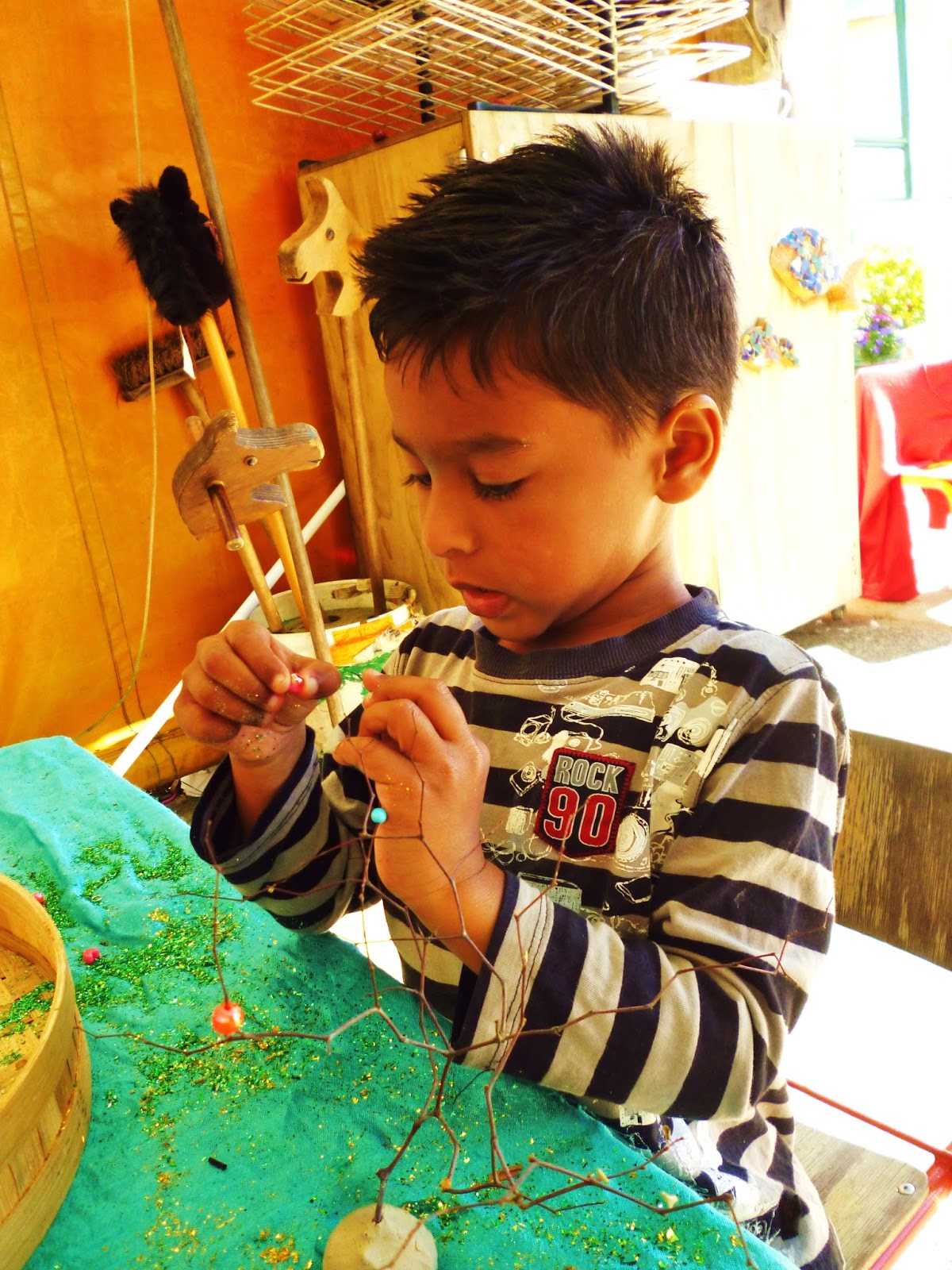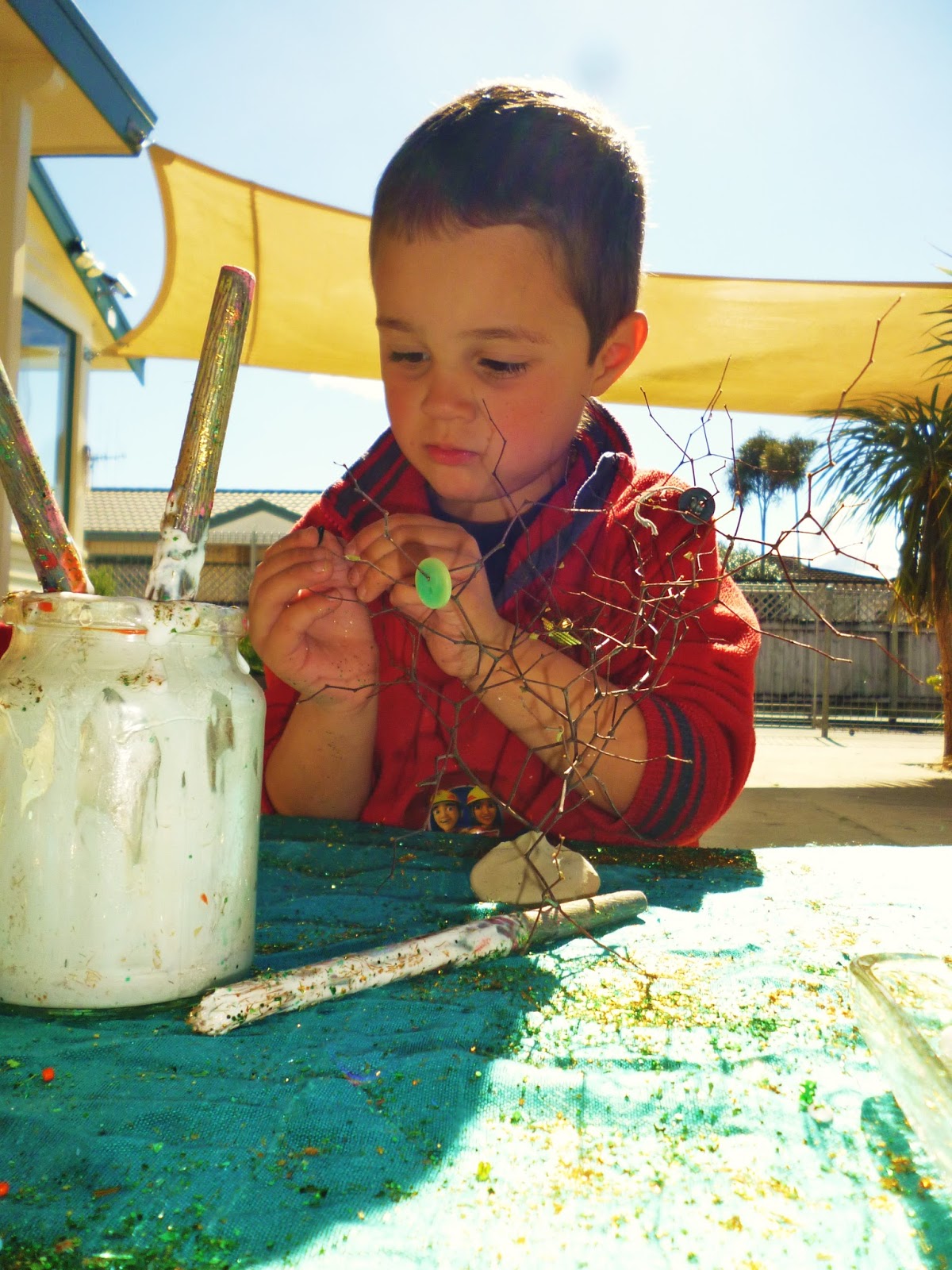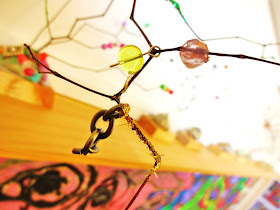During the past month work has begun on the refurbishment of our Art Studio.
This structural enhancement has been on our directional plan for the past three years, and has been made possible through our hugely successful Art Auction Fundraiser (earlier this year) and a generous grant from Pub Charities.
 |
| Mairtown's original art sink area |
 |
| The art studio is on the southern side of our building |
As with all projects at Kindergarten, this refurbishment has been carefully thought through and planned. We consider the physical environment at Mairtown to be the 'third teacher'. In other words, our environment 'speaks' to children about how, where and what they can do in this space.
Two of our key considerations when planning for spaces in the Kindergarten is aesthetics and organisation. Our goal with the refurbishment is to combine the two.
Aesthetics is a term that can be defined as the 'critical evaluation' of a piece of art or a design, based on criteria that are seen as important by a particular culture.
Another definition views aesthetics as the appreciation of a pleasant and special sensory experience (usually visual, aural or tactile). However, as well as being pleasing to the senses, aesthetic objects or situations often involve other features 'that are pleasing to the cognitive faculties: repetition, pattern, clarity, elaboration or variation of a theme, contrast, balance, and proportion'. Inherent in this notion of aesthetics is the premise that aesthetic experiences are pleasurable and involve an emotional response from the spectator (Pairman & Terreni).
Thanks to a Pub Charity grant, one of the first steps in the revamp was the installation of a beautiful big skylight. Malcolm, from Northland skylights made a wonderful job of replacing an old vent with a bright, white, light filled space. Our art studio is illuminated by the sun all day!
Sunlight is vital for cognitive
development and growth. Natural light is healthier, creates bright and inviting
spaces and has varying qualities of illumination throughout the day (Pairman & Terreni).
 |
| Christine and Kate watch raindrops 'race' down the newly installed skylight |
 |
| The studio is now so well lit, that we can choose not to turn the lights on |
We also organised for local electricians to replace our tube lights with studio lighting. These lights can be angled to generate attention, or to create shadows on our main studio wall.

This is our last week of term three. Over the break our new curved, wooden shelving is
being formed by the team at Smith and Parker Joiners. We can't wait to have the
new unit and shelving installed over the holidays. We look forward to sharing
images of our revamped space with you all.
Good aesthetics result not only in an
overall sense of attractiveness and beauty within a centre, but also gives
pleasure to those who work and play in the centre, and to those who visit (Pairman
& Terreni).
Ka kite ano
Kim
































































